
Since blogging about the bright blue penstock used in the Glen Falloch hydro schemes at the end of June, I have been intending to write more about the quality of the “restoration” works and here will focus on the dams/intakes that collect the water for the four schemes.
In discussing the schemes I will refer to the mitigation measures that were approved by the Scottish Government as part of the original planning consent back in 2010 (CLARIFICATION_NOTE_4, and 11 09 01 Appendix 2 Additional Mitigation) and conditions) which the Loch Lomond and Trossachs Park Authority said would ensure that “the overall integrity of the area will not be compromised.” Since then LLTNPA has developed its Supplementary Guidance on Renewables.
 My first view of any of the dams was from above. I had come down the Allt Fionn, after a run over Ben Oss and Beinn Dubhcraig, and after a beautiful gorge came across the scene on the left. Hardly less beautiful and it probably coloured my initial response to the downhill side of the dam which I thought had a negligible impact on the landscape. Re-looking at the photos now I would not go that far, but I still think the Allt Fionn is the best of the Glen Falloch Hydro schemes (and the LLTNPA won an award for it).
My first view of any of the dams was from above. I had come down the Allt Fionn, after a run over Ben Oss and Beinn Dubhcraig, and after a beautiful gorge came across the scene on the left. Hardly less beautiful and it probably coloured my initial response to the downhill side of the dam which I thought had a negligible impact on the landscape. Re-looking at the photos now I would not go that far, but I still think the Allt Fionn is the best of the Glen Falloch Hydro schemes (and the LLTNPA won an award for it).
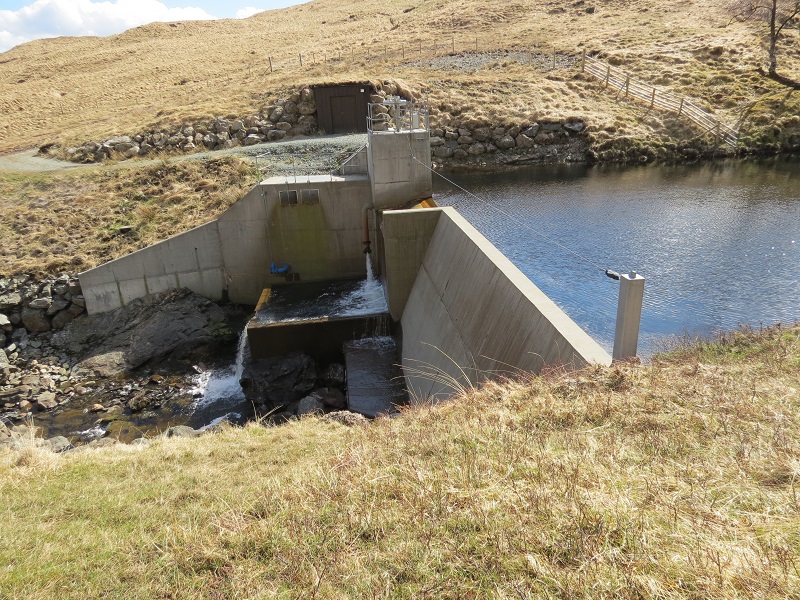
One of the reasons the Allt Fionn Scheme has limited visual impact is that upstream of the dam there was very little engineering – just the blocks on the far side of the dam which have been well covered. Other aspects of the dam though do not meet the requirements of the Park’s current guidance.
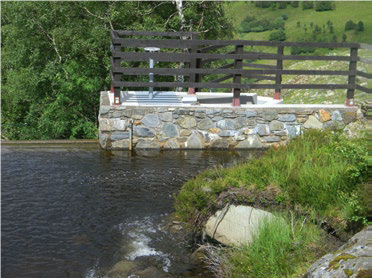
“If wing walls are required and concreteis to be used, choose a subdued colour which blends with the adjacent surroundings. A local source of boulders should be used to help screen the concrete structure. Be aware that concrete will stain on contact with water and that at periods of low water linear striping can be an issue. Use stone cladding on exposed faces of the concrete to assist it to blend with its surroundings.”
In fact not a single one of the Glen Falloch dams meets the Park’s current best practice guidance – all are concrete without any stone cladding though in some cases boulders have been piled against the wing walls to helps screen them.
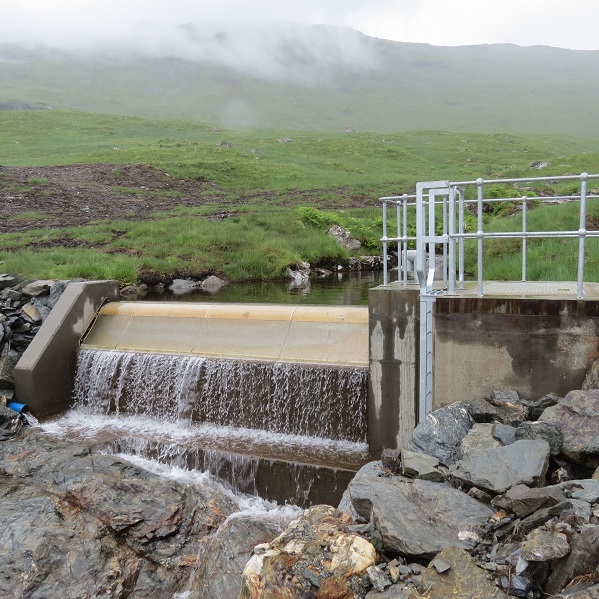
The original landscape assessment suggested there would be very little impact on the landscape apart from the dams themselves.
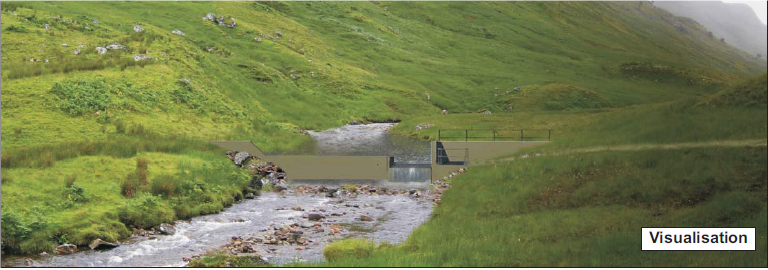
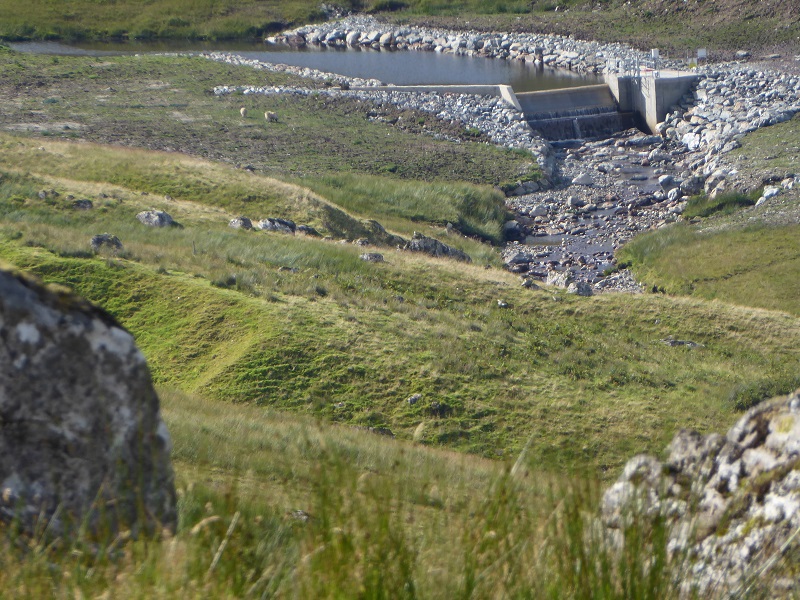
The current visual impact of the Upper Falloch must be at least six times the size as in the original landscape assessment and the main reason for this is the use of boulders in screening the dam and in “rip-rap retention” along the banks of the intake pool but also the river below. Now its possible “restoration” work is not complete and some of the boulders may be covered in vegetation although its not clear where this might come from as none has been stored locally. In my view the left side wall of the dam would have looked better without the boulders. Its difficult to see anything growing on them for decades and they are likely to continue to look like a pile of boulders dumped by a digger. Its hard to see how anyone could claim this is effective restoration of the landscape. However, it appears to result from the LLTNPA Guidance:
“bury wing walls to reduce their dominanceand minimise the amount of visible concrete as far as possible;” and “carefully place large boulders against wing walls, to reduce the exposed height and the need for railings;”
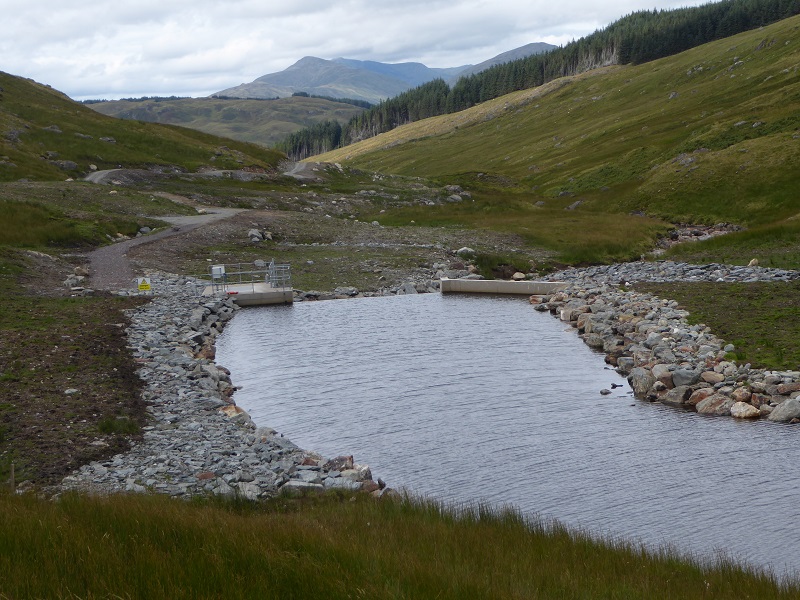
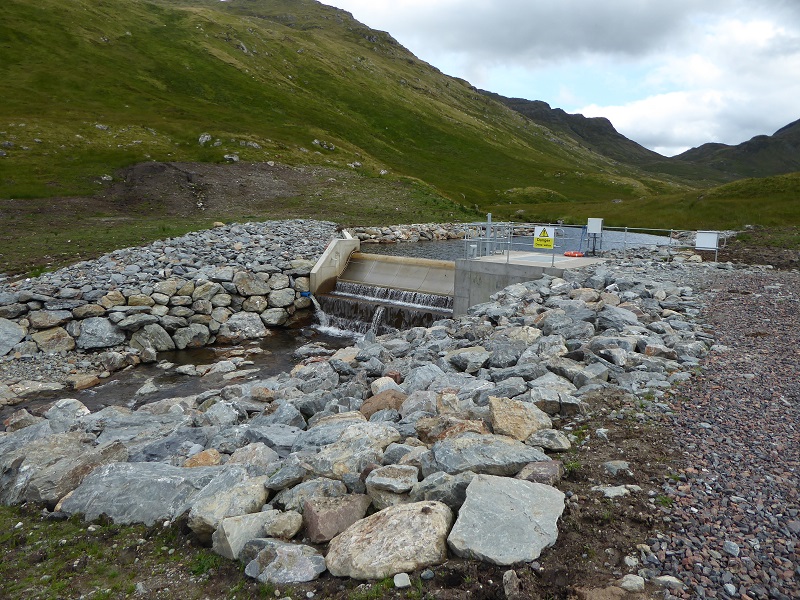
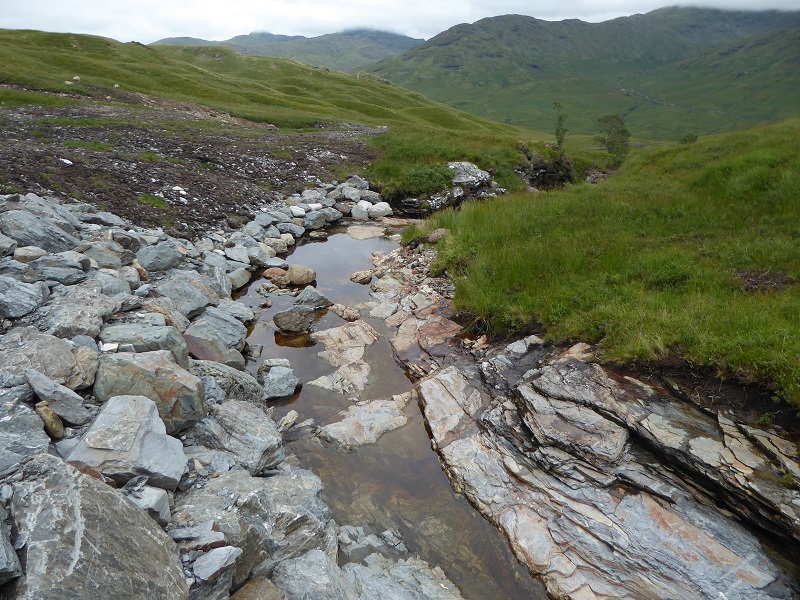
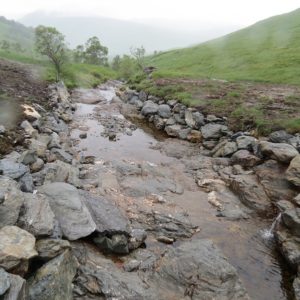
What is interesting is how little the LLTNPA has to say about what I believe is the biggest landscape issue associated with the dams:
“If rip-rap retention is required in the vicinity of the inundation area or the river bank immediately adjacent to the weir, consideration should be given to the detail and use of local rocks and boulders to minimise visual impact”
Elsewhere under mitigation measures though it says:
“Cover any rip rap bank protection in peat”
This has clearly not happened and I don’t think can.
While I believe the rip-rap retention and lack of stone cladding of the concrete are the biggest landscape issues, there are other examples of poor landscape design.
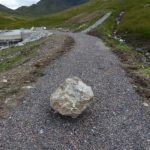
Hard chip, which looks completely different to the local schist, has been imported to at least three of the intake areas. It appears there might have been some spare at the Upper Falloch powerhouse and someone thought it a good idea to bring it up the hill. The LLTNPA’s Guidance states:
“The surface material on tracks should be with an aggregate of similar tone, colour and texture to the surrounding landscape,”
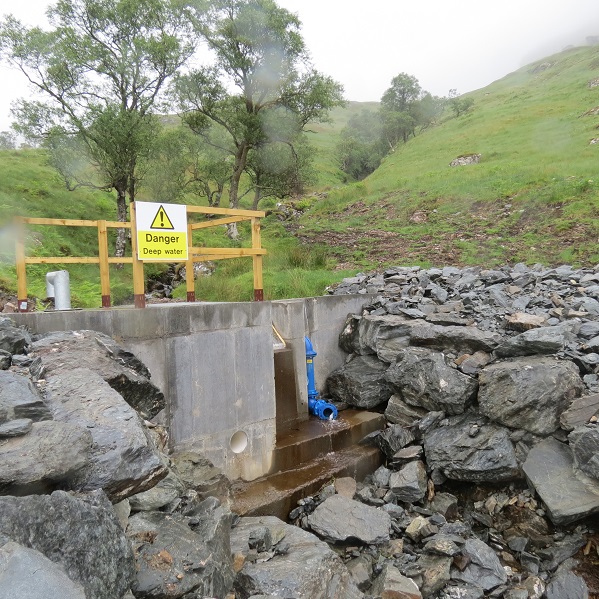
This small intake is only example in Glen Falloch where wood has been used for the railings, which accords with the Park’s policy on use of natural materials where possible – the sign unfortunately spoils the effect as do the metal footings. As with most of the schemes it has a blue outflow pipe – when the Park’s Guidance states “Introduce as few different materials and colours as possible. A mute galvanised finish in a mute grey / green colour will blend in with most upland environments.” This is another place where cladding the concrete with stone would have looked far better than piling up boulders in front of the wing walls.
What needs to happen
While I have seen worse examples of hydro intakes than those in Glen Falloch, the Beinn Bhuidhe scheme just outside the National Park being a good example, I believe the ones in Glen Falloch will have a far more lasting impact than the LLTNPA has claimed and they need to learn from their mistakes:
- first, siting of the dam is of crucial importance and if dams cannot be constructed without extensive use of boulders to retain banks, in my view they should not be constructed at all
- second, the LLTNPA needs to reconsider its policy of getting developers to hide wing walls behind heaps of boulders and instead develop other solutions such as facing them with stone
- third, they need to enforce planning requirements and their Supplementary Planning Guidance on Renewables. There are clear examples where they have failed to do this.
